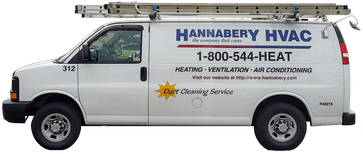Is Indoor Air Quality a Concern?
For The Air You Breathe...
Call Us Today!
While the quality of our environmental air has been a concern for decades, emphasis has now fallen on the quality of indoor air, the air in our homes - air that often contains substances that can irritate our allergies or make us sick.
Research shows that indoor air is often far more polluted than outdoor air, and that many of the particulates commonly found in indoor air are known irritants. About 99% of these irritants cannot be seen with the naked eye.
Defining indoor air pollution:
The air in our homes is a combination of millions of small particles and gases. Today, homes are built with tighter construction to help keep energy costs lower. This has the effect, however, of permitting fewer air changes - and of keeping higher concentrations of airborne particulates inside the home.
Untreated, higher concentrations of these particulates can take their toll. Paint, wallpaper, and interior decorating fabrics can become dingier as particulates settle. These particulates may also cause nasal congestion, eye, throat, and skin irritation, sneezing, headaches, coughs; even nausea and fatigue in some cases.
What are some indoor air pollutants?
Some particulates found in indoor air are as fine as .01 microns in diameter, or 10,000 times smaller than the diameter of a human hair. Commonly found substances include:
- Pollen and plant spores
- Dust
- Viruses, bacteria, and fungi
- Pet dander
- Human skin flakes
- Dust mites, droppings, and their carcasses
- Cooking smoke and grease
- Mildew and mold
- Cigarette smoke
Magnified view of common household contaminants...

|

|
|
| Dust Mites | Pollen | |

|

|
|
| Bacteria | Pet Dander |
There are three ways to treat indoor air problems:
And the best solution involves some part of each of these!
- Source reduction is attacking particulates at their source. This might involve some drastic measures, such as cutting out smoking and getting rid of pets. But obviously, these solutions might not always be possible or practical. Duct Cleaning could be another option depending on conditions.
- Another solution is to dilute the concentration of particulates in the air with cleaner outdoor air. Dilution is desirable because it helps decrease gases given off by carpeting, building materials, and other products. While some air is continually leaving your home, it may not happen at a very high rate in tightly-constructed homes. To speed up dilution, you can open windows and doors to let in more outdoor air. This, too, is not always practical or possible, especially in the Winter. A better alternative is installing an ERV/HRV Fresh Air Ventilation System.
- The third solution, filtering the indoor air supply, can take several routes. Almost every home has a basic furnace or air conditioning filter, which prevents the biggest particulates, such as lint, hair and large dust, from getting into the furnace. These filters operate at a cleaning efficiency of about 5% at best (meaning that they only remove about 5% of all the particulates in your air). A better solution would be upgrading to a whole-house high efficiency air cleaner.
Hannabery HVAC offers a scope of services designed to keep your comfort to a maximum and your costs to a minimum. Especially when it comes to Indoor Air Quality (IAQ). We offer a full line of air cleaning products, accessories, and services for your home or office.
Improve the Air Quality in Your Home Today!
How Comfortable Do You Want To Be?
[Must be in our service area]

